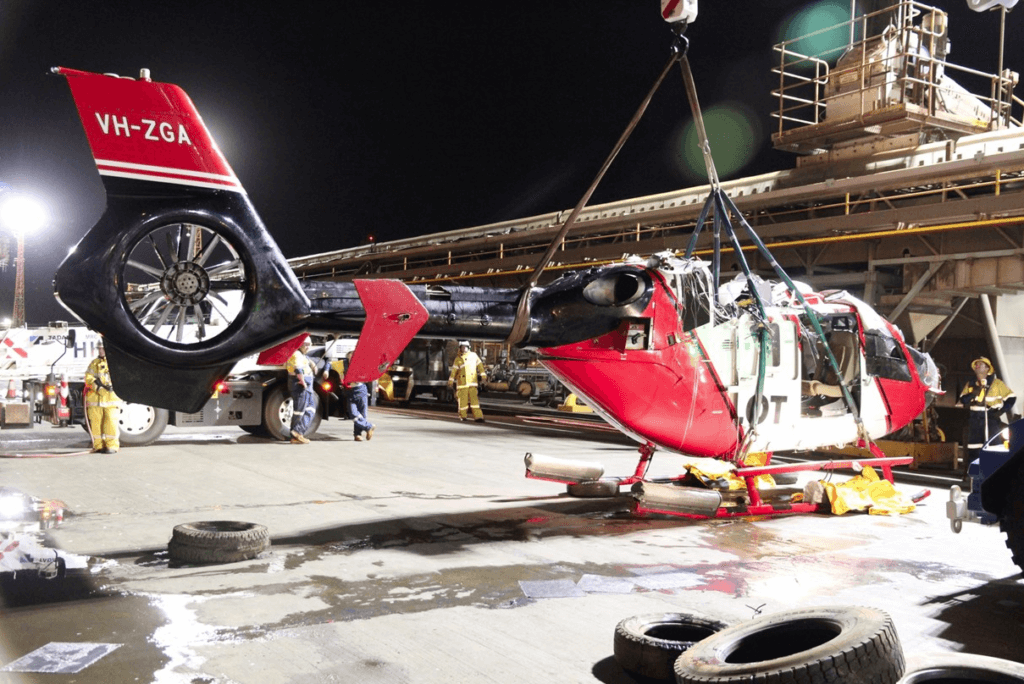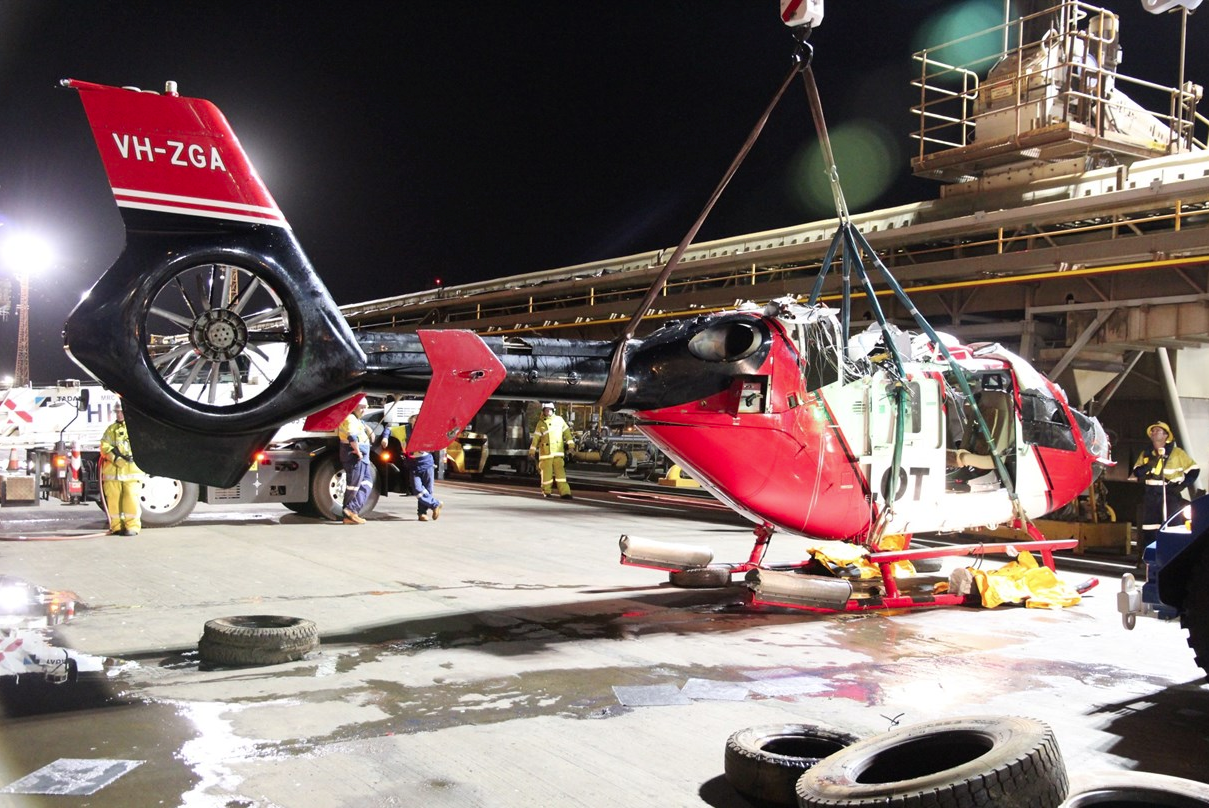The Australian Transport Safety Bureau (ATSB) has issued an important safety advisory notice following the release of its preliminary report into a fatal accident involving an Airbus EC135 helicopter, which collided with water northwest of Port Hedland at night on March 14, 2018.

The helicopter, registered VH-ZGA, was attempting to collect a marine pilot from a bulk carrier which had departed Port Hedland. The helicopter was being flown by a pilot, who was recently employed by the operator, under the supervision of a company training and checking pilot.
After a first approach was discontinued, the crew made a second approach to land on board the ship. During this approach the helicopter impacted the water and rolled inverted.
The training and checking pilot managed to release himself from his seat and exit the submerged cockpit. The helicopter floated for a period of time before sinking. Tragically, the pilot was unable to free himself and was fatally injured.
As a result of the initial investigation, the ATSB has contacted all helicopter operators who conduct overwater operations to inform them of the importance that frequent helicopter underwater escape training (HUET) for aircrew and regular passengers has on increasing survivability of a ditching.
“Our examination of the helicopter operator’s records indicated that the deceased pilot, who was new to the company, had not undertaken any helicopter underwater escape training for the past nine years,” said ATSB executive director of transport safety, Nat Nagy.
“It is vital for all pilots who undertake over water operations to regularly conduct underwater escape training to greatly increase their chances of survival in an accident such as this.”
HUET involves a replica of a helicopter cabin and fuselage being lowered into a swimming pool and rolled inverted to simulate a crash situation. During the training, students practice bracing for impact, identifying primary and secondary exit points, escaping the helicopter and surfacing techniques.
“The ATSB strongly recommends that aircrew and regular passengers on these sorts of operations receive training in underwater escape to increase survivability in the event of a ditching,” Nagy said.
The wreckage of the helicopter was recovered from the seabed and moved to a secure storage are where it was examined by ATSB transport safety investigators.
The investigation is continuing and a final report is expected to be published during the first quarter of 2019.










I fully endorse this action for regular HUET training,Yes its a nuisance but it keeps your skill set up.
Operators are reluctant to pay for this training so unfortunaetly the only way is to make it MANDATORY for any over water flights, this includes Rivers and lakes.